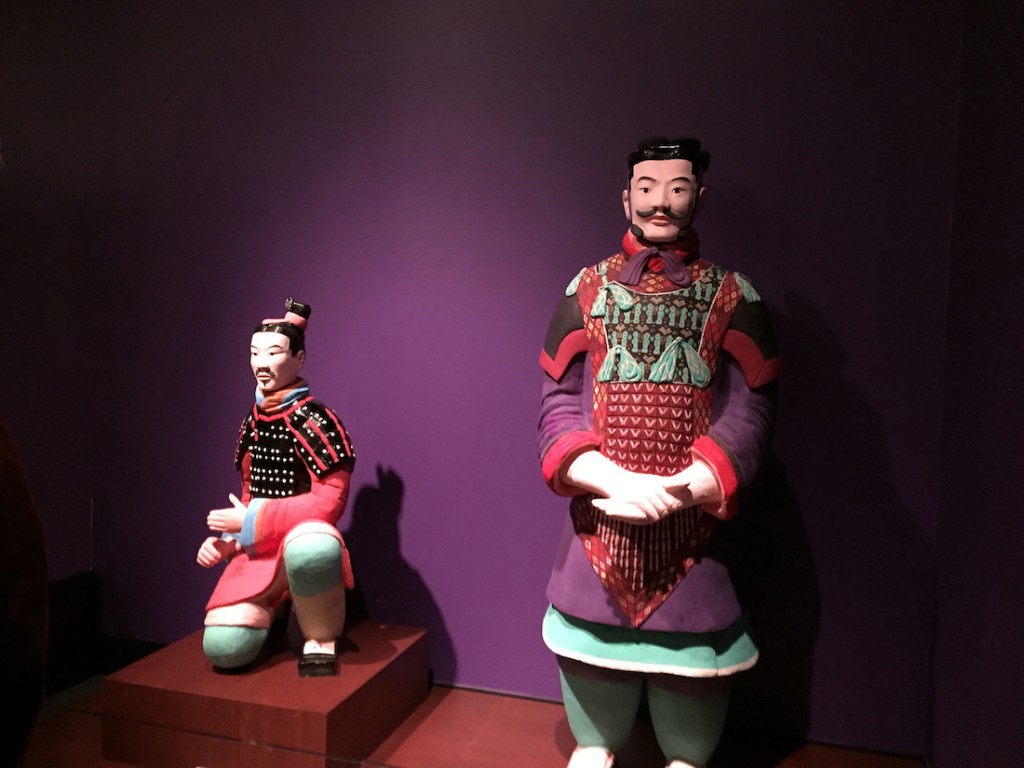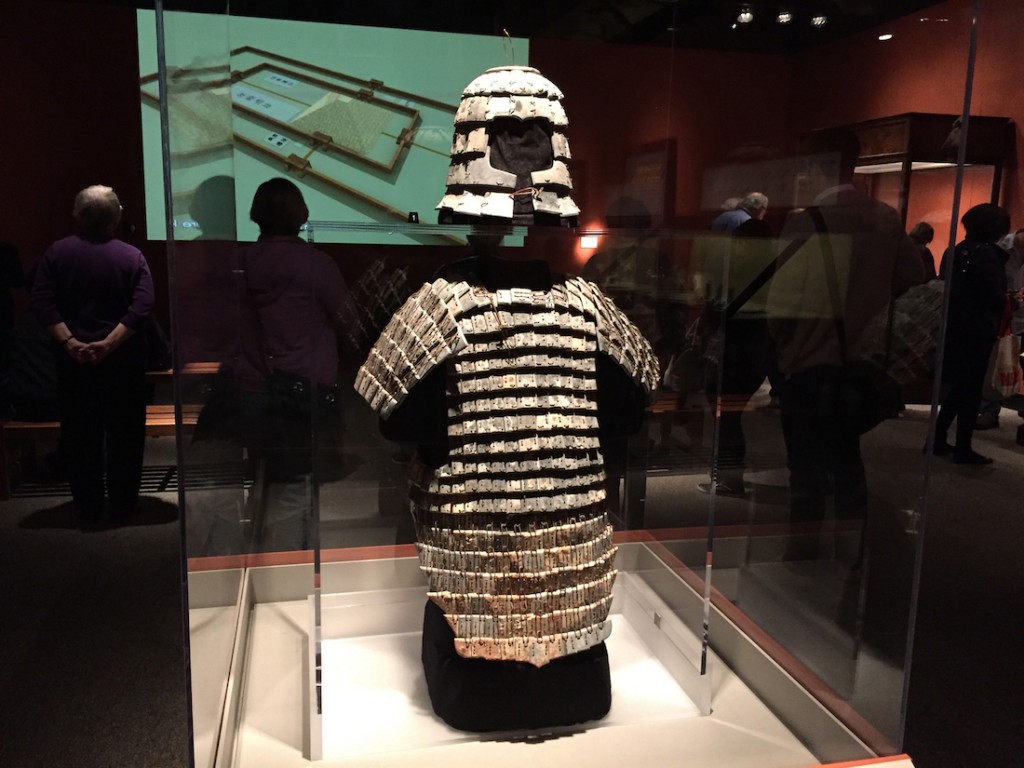By Chencheng Zhao and Shanshan Wang
Terra-cotta warriors, one of the greatest archeological finds of the 20th century, will return to Chicago first time after more than 30 years at the “China’s First Emperor and His Terra-cotta Warriors” exhibition at The Field Museum opening Friday.
Related stories
“It’s truly a once-in-a-lifetime opportunity to experience,” said Richard Lariviere, president and CEO of The Field Museum.
The exhibit, which runs through Jan. 8, features more than 170 objects, including bronze artifacts, weaponry, nine statues of warriors and a horse. This year The Field Museum is the only place in North America the warriors can be seen, since their debut in Chicago in 1980.
“Terra-cotta warriors not only represent the splendid Chinese ancient civilization but also reflect the wisdom and artistic talents of the mankind 2000 years ago,” Zhao Weiping, Chinese consul general in Chicago, told a press conference Tuesday.
In 1974, a local farmer in Xi’an, Shaanxi Province in northwestern China first discovered the vast burial complex surrounding about 7,000 warriors when he was digging a well in his village. This underground army was created to guard China’s first emperor, Qin Shihuangdi for eternity.
The warriors, with an average height of 6-feet, impressed the world with their mass scale and the uniqueness of each figure. Due to different molds and details added by hand, each warrior has his own face and hairstyle. In addition to beards and mustaches, hair was shaped in plaits, French rolls, and buns. Their attire reveals their roles in the army—the generals with heavy armor, while foot soldiers were dressed for speed in light tunics and pants for maneuvering quickly.
Uniformly in the color of terra cotta, however, “they didn’t come like that,” said Lu Zhang, a researcher at The Field Museum. Zhang said that the warriors lost their luster soon after the excavation as a result of oxygenation of the mineral pigments in paints used on the face and the costumes. The exhibition restores the original look of the warriors using a set of models.
Field researcher Zhang said the figures are brownish, the color of terra cotta. However, “They didn’t come like that,” she said. Zhang said the warriors lost their luster soon after the excavation as a result of oxygenation of the mineral pigments that painted the face and the costume. The exhibition restores the original look of the warriors in a variety of colors: pink, red, green, blue, black, brown, white and lilac.
Compared with their debut at the Field in 1980 as part of a larger exhibition on the Bronze Age in China, this year’s exhibition provides a larger historical context and delivers a broader story.
In 221 B.C., Qin Shihuangdi, China’s first emperor vanquished his rivals and unified separate warring states into one powerful nation on a land that today is known as “China.” For political and military strategy, he constructed the first Great Wall, built roads throughout his vast territory, and standardized China’s script, currency, weights, and measures in a series of successful reforms.
Qin Shihuangdi concluded the solution to immortality was building a subterranean model of his empire for him to rule in the afterlife, including generals, soldiers, archers, infantrymen, armored officers and more, a whole kingdom that vowed to serve their ruler.
Qin Shihuang’s ministers began planning the burial when he was enthroned at the age of 13. The emperor took charge in his twenties. Fearing that a huge human sacrifice could decimate the nation’s fighting force, the emperor finally decided to use terracotta warriors instead.
“It’s part of our job as the content team to try to weave that information into our exhibit,” said Gary Feinman, MacArthur Curator of Mesoamerican, Central American/East Asian Anthropology at the The Field.
“We want to make sure that the show not only gives information about the magnificent warriors —the ‘magnet’ of the exhibition but also allows the audience to know they are from a significant period in Chinese history that related to the pivotal figure of the first emperor, his expansion and unification of China and its impact on the subsequent history.”
Feinman said the layout of the exhibit gives the audience a feeling of a big historical context with murals, maps and banners of different warrior heads hanging from the ceiling.
Zhou Kuiying, deputy director general of the Shanxi Province Cultural Relics Bureau, said at the opening that even though the exhibition is not comparable to the historical complex in Shanxi, visitors can still get a glimpse of the glorious Chinese history from a handful of marvelous items on display.
Over three decades, thousands of craftsmen were involved in the construction. A model at the exhibition shows the process of how artisans built the terra-cotta army. They created each soldier from the bottom up, first pressing the clay into molds to make the feet, and then attaching the legs and building up the torso and arms. Body parts were all constructed separately and then assembled in a production line, as one of the first examples of mass production in recorded history.
At the first sight of thousands of warriors in Xi’an, Feinman was “completely blown away” by the scale and the human effort that went into it, which was just a small part of a much larger complex. “As an archaeologist, looking at something so large, so detailed and so old always pulls my heartstrings. Even I’ve been studying the past for most of my life, such an incredible site knocked my socks off,” he said.
Feinman wrote articles comparing the Qin dynasty with the Roman empire: In the east, the Qin and Han unified and dominated China for 400 years while in the west the Romans conquered and unified much of the Europe for about the same length of time. “It’s an important contrast,” said Feinman. “If you look at the subsequent histories of the two sides of Asia, they are very different.”
Feinman said China following the Han was unified politically at the scale equal or greater than Qin’s regime, while Europe has almost never seen any kind of unification after the Romans. “We still hear every day about the problems of Europe because they cannot unify all the states, languages and so on. I think that’s the legacy of Qin, that’s the legacy of the first Emperor and the steps that he took to consolidate the different warring state,” said Feinman.
“The past is important for understanding the present. A lot of times all over the world people don’t realize that.”
(Chencheng Zhao/MEDILL)









